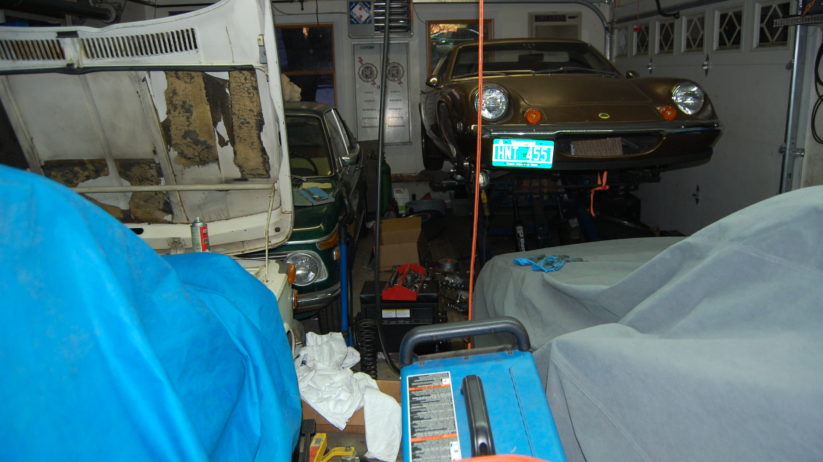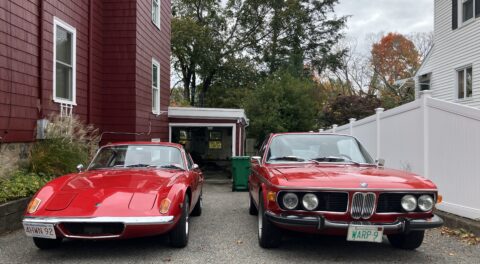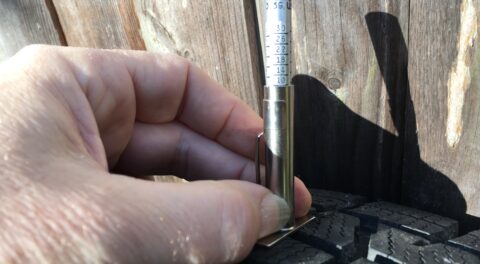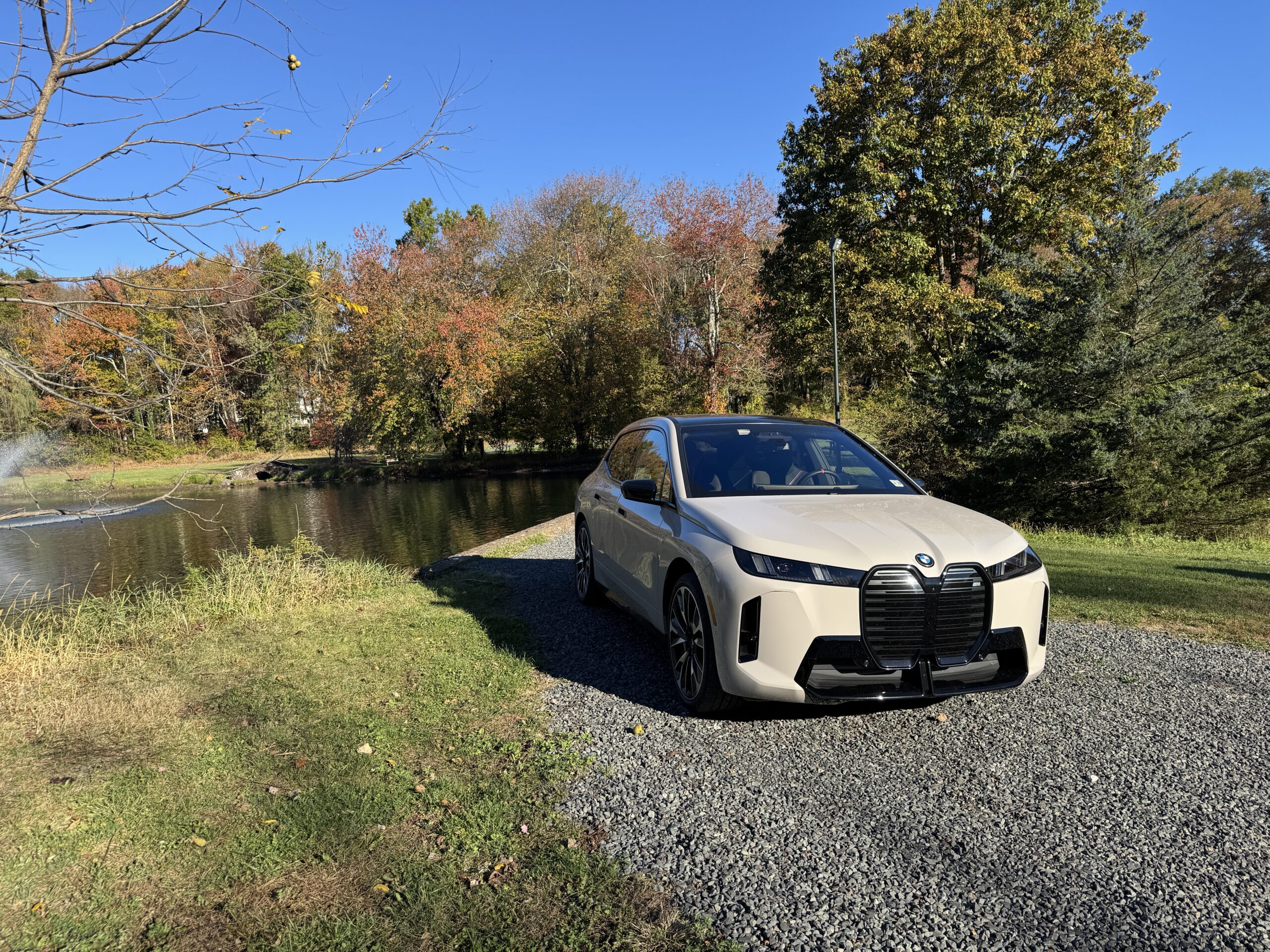Two weeks ago, in The Return Of The Electric Slide, I wrote about shoehorning four cars into my garage. I explained that on the positive side, I got four cars not only safely tucked out of the elements, but into an attached garage where I could easily work on them—but the downside was that they’re now crammed in like sardines, leaving very little space for that work.
Initially, after the shoehorning, the space was very well organized, since I’d gotten all the tools and parts off the floor in order to cram the cars in, but within a week it had reverted to my usual high-chaos density. No, I take that back: It was now at a higher chaos density, because the amount of free space was less, but the amount of tools, parts, and projects was the same, if not greater.
Although I’ve been whacking away at getting the rustproofing out of the the engine compartment of Hampton (the 48,000-mile 2002 I bought in September), the main winter-wrenching event thus far has been rebuilding the front end of the Lotus. My ’74 Europa Twin-Cam Special had been off the road for 40 years before its resurrection last spring, and although I was driving it around all through the summer and fall, even cruising at speed on the highway, clearly the front end needed attention.
The two primary issues were that the rubber boots on the ball joints and tie rods had decayed completely out of existence, and the front end shook at around 65 mph, even after a proper road-force wheel balancing. Although I couldn’t feel any play, it was certainly possible that the former was the cause of the latter. In addition, one of the front sway-bar links was broken, and in order to change it, the bar has to be removed and the link and its bushing slid over one end.
Of course, the idea that a car that’s been off the road for 40 years won’t need a full front-end refresh is optimistic bordering on delusional, so with the Lotus up on the mid-rise lift, in I went—and out came everything except the steering rack. The garage is now—again—actively hazardous to walk through.
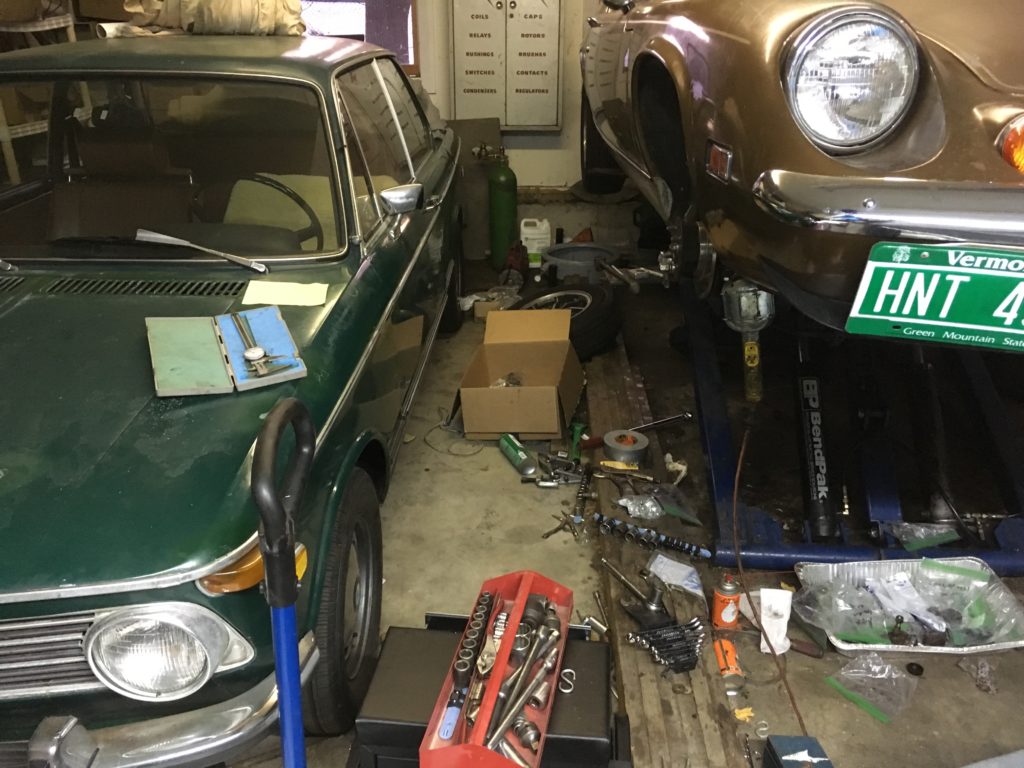
Sort of like sardines with booby traps.
And that brings us to the subject at hand.
Much of my work on the vintage cars happens during the spring, summer, and fall. On the one hand, that’s when I want to be driving the cars, but on the other, good weather facilitates the cars being moved around. In general, I find that during the other three seasons, because I don’t want the cars to be off the road any longer than necessary, there’s a sense of urgency surrounding repairs; my desire is to get ‘er done and get ‘er back on the road, and thus I wind up doing marathon wrenching sessions that leave me spent, moaning, prostrate, and sore beneath the car. In addition, during good weather, there’s the substantial advantage that a certain amount of work can be performed in the driveway rather than requiring that all repairs be performed in the garage.
Winter, however, brings a different and distinct rhythm of repair. Once the cars are strategically stuffed in the garage, they aren’t going anywhere for months. The downward slope of the driveway leading up to the garage, coupled with the fact that there’s no convenient place to put the snow, means that once the white stuff starts falling, it may be difficult, if not impossible, to get a car on summer tires up the slope—or, for that matter, even to get the garage door open. Plus, the car that’s in the space directly behind the roll-up door is the ’73 E9 3.0CSi, and short of a low-probability scenario such as a family member needing to be taken to the hospital and every modern car and ambulance within ten miles being fried by an electromagnetic pulse like in the 2005 version of War Of The Worlds, there are virtually no scenarios that would cause me to open the garage door, pull the E9 out, and subject it to the vagaries of bad weather.
The winter garage isn’t the most comfortable of environments, but it’s not too bad. Because it’s attached to the house, I don’t have to trek outside in boots and a jacket to get to it. It’s cold, but typically not below freezing. The chimney pipe for the house’s furnace and water heater runs through it, essentially acting like a 31-foot-long linear radiator. I do have a big 75,000 BTU Modine Hot Dawg heater hanging from the ceiling that warms the air up quickly if needed, but any metal you lay your hands on is still cold.
And really, once I settle into the new winter rhythm, it’s actually kind of nice. I don’t feel rushed about anything. I’ll often leave the heat off and duck in there for fifteen minutes a night and do just one thing—for example, just enough for me to learn what part I need to order, or which procedure I need to to research next.
The rest of the year, when I’m working on a project, I’ll usually try to be as efficient as possible. This involves ordering parts early so things aren’t train-wrecked while waiting for stuff to arrive, and figuring out what fasteners I need for the whole project so I’m not making multiple trips to the hardware store. In winter, though, this dynamic gets turned on its head. For example, when I find that the 40-year-old 1/2-20-inch Nylok fasteners holding on the front wishbones don’t really have enough bite left for me to reuse them, I’m really quite happy to leave the garage and run down to the hardware store and replace them, then do it again when I find the same issue on the ball joints, even if that’s later that same day. Although inefficient, this routine has several benefits: It breaks up the time in the cold garage. It makes it so that I don’t need to pull every old fastener out of its plastic bag at the same time to match it up. And it makes it so I don’t need to try to think too far ahead; I can compartmentalize and check off little victories. Some days, that’s literally just threading one nut onto one bolt.
A good example of this laid-back pace was the spring compressor. As part of the Lotus’ front-end refresh, I wanted to replace the still-functional but soft 45-year old original shocks, and lower the nose about an inch. This meant dealing with the coil-over shocks and springs. These are smaller and more tightly wound than anything I’d worked on before, and none of my three spring compressors would work on them, due either to the small spring diameter, the tight space between the coils, or both. I read on user forums about what spring compressor to use, and the answer appeared to be that you need to roll your own. Normally I would find this frustrating, as I do any work that’s in the way of the real work, but instead I got into it. I saw the photos of the spring compressors that folks had made out of a set of aluminum plates pulled together by four threaded rods. Nope, I concluded, not for me; I didn’t have the means to cut holes that big in plate aluminum. I finally settled on a set of properly-sized turnbuckles pulling on a set of thin S-hooks that fit between the coils. A guy on one of the forums who works at Dave Bean Engineering, a Lotus house in California, commented that that’s basically what they use.
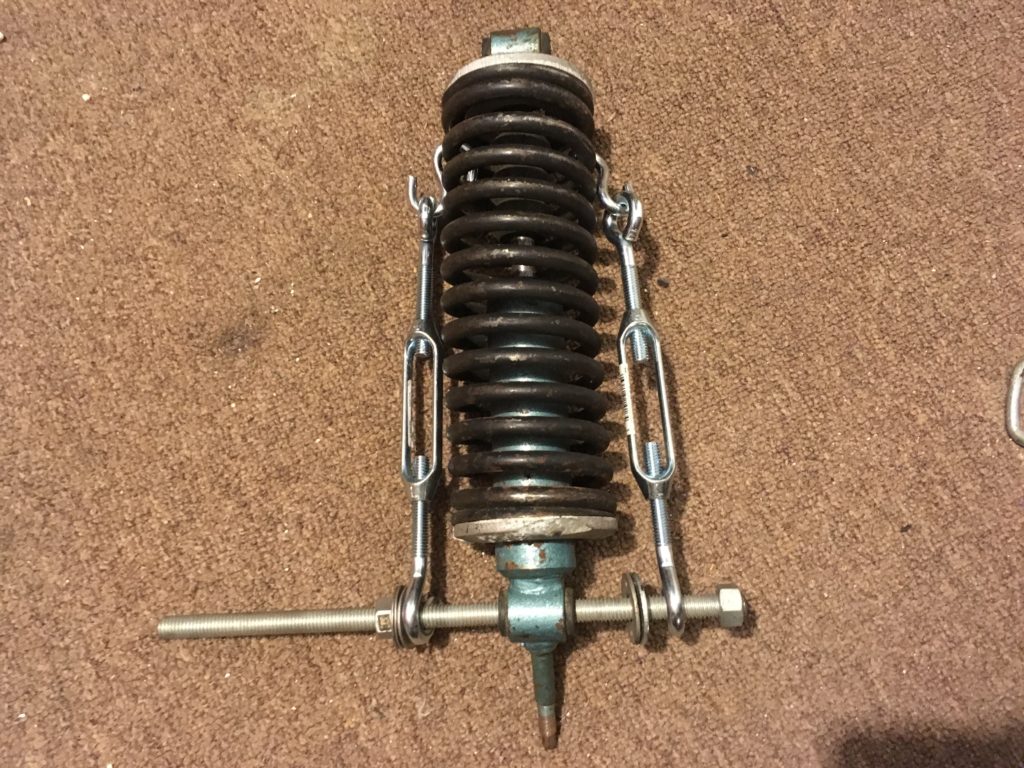
Normally, spending a few days figuring out how to cobble together a spring compressor would’ve irked me, but instead I got into it.
Similarly, sorting out a sway-bar issue took patience that would usually drive me nuts. The Europa doesn’t have a front subframe, so the sway bar isn’t clamped in place with the familiar U-shaped brackets used on vintage BMWs. Instead, the links are about 10″ long and hang down from the frame. This means that when the car is lowered, the links force the sway bar, which is already the lowest point under the car, dangerously low, inviting it to catch on every speed bump and driveway. The remedy is to cut the links, thread them, and make them adjustable using spin-on Heim joints. As part of this work, I elected to modify the links so that the bushings clamp onto the bar rather than having to be slid onto each end. Multiple parts orders and trips to the hardware store ensued while I found the right combination of components. As long as each day held some degree of forward motion, I was happy.
I now have the Lotus’ front end reassembled. I’m certain that once I drive the car in the spring, there will be tweaking necessary, but getting the lion’s share of the work done over the winter has been a welcome respite from my usual frenetic pace when I feel that the work is getting in the way of enjoying the car.
There’s a saying attributed to self-help guru Werner Erhard: “Ride the horse in the direction that it’s going.” Owing to temperature, snow cover, sunlight, biorhythms, etc, you might not be as productive in your winter automotive endeavors as you are the rest of the year. But with realistic expectations and a few changes, you might surprise yourself.—Rob Siegel
Rob’s new book, Resurrecting Bertha: Buying Back Our Wedding Car After 26 Years In Storage, is available on Amazon here. His other books, including his recent Just Needs a Recharge: The Hack MechanicTM Guide to Vintage Air Conditioning, are available here on Amazon. Or you can order personally-inscribed copies of all of his books through Rob’s website: www.robsiegel.com.

